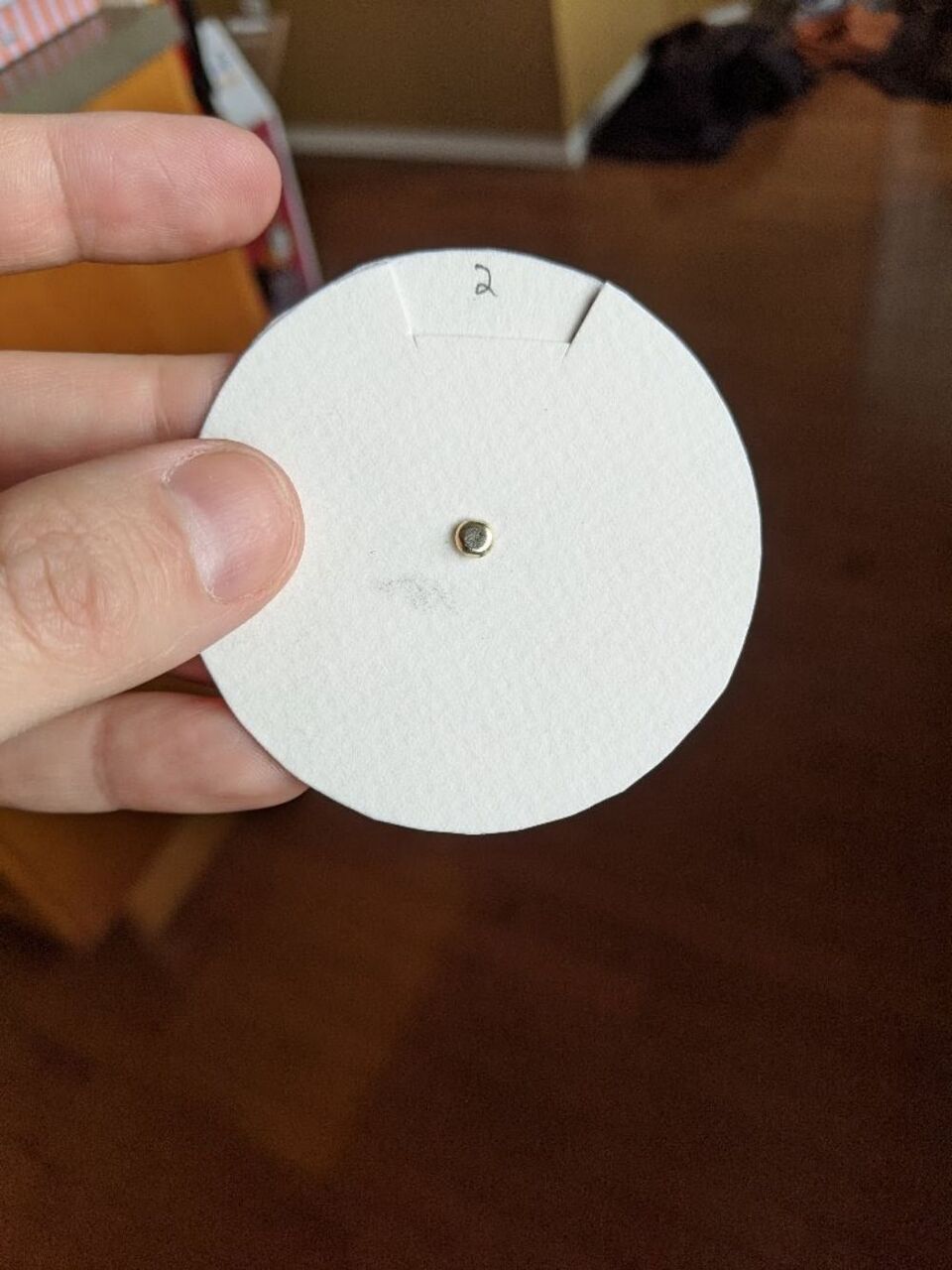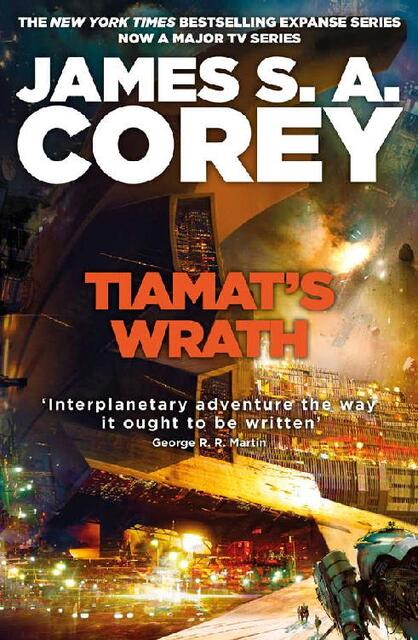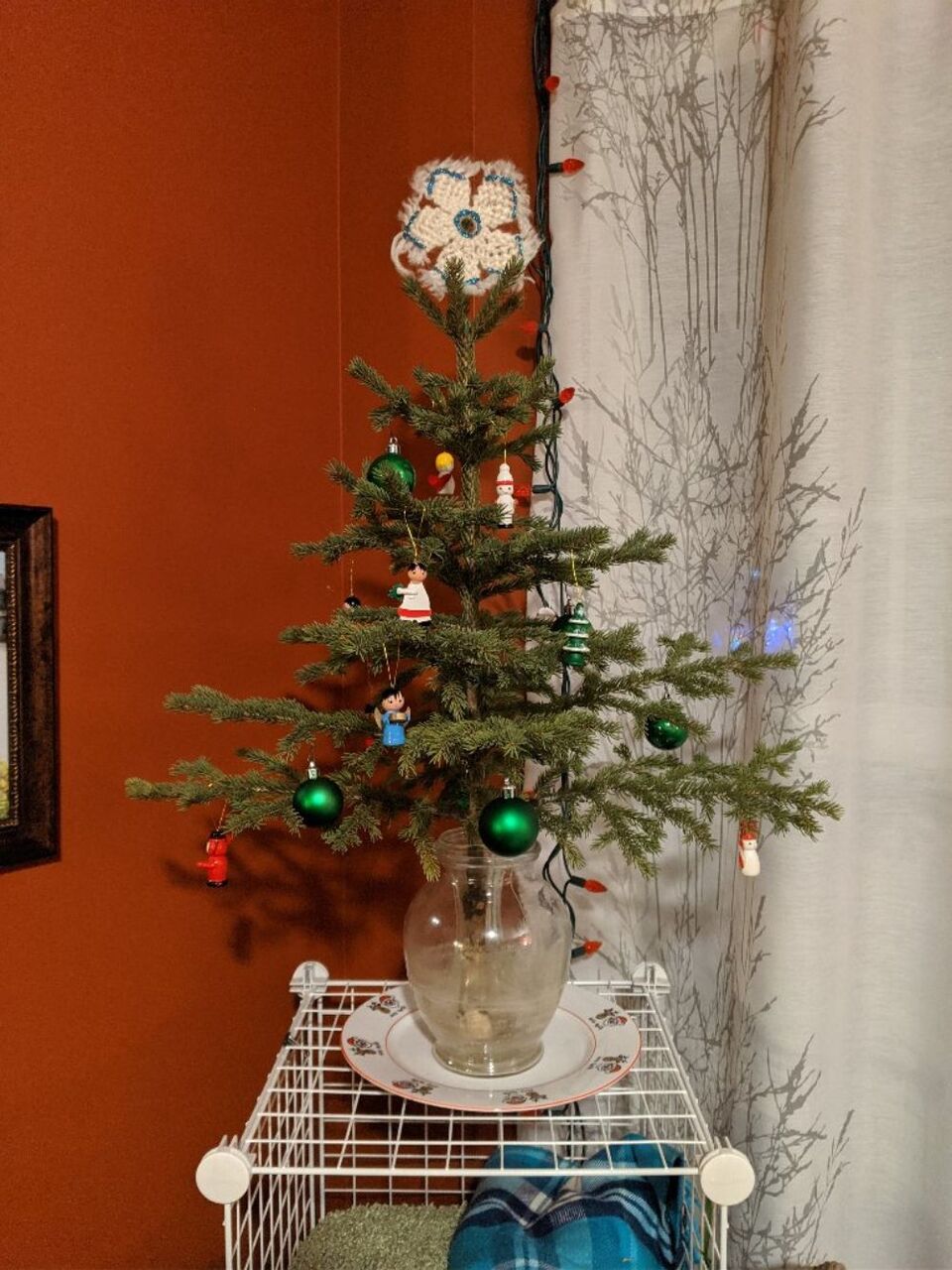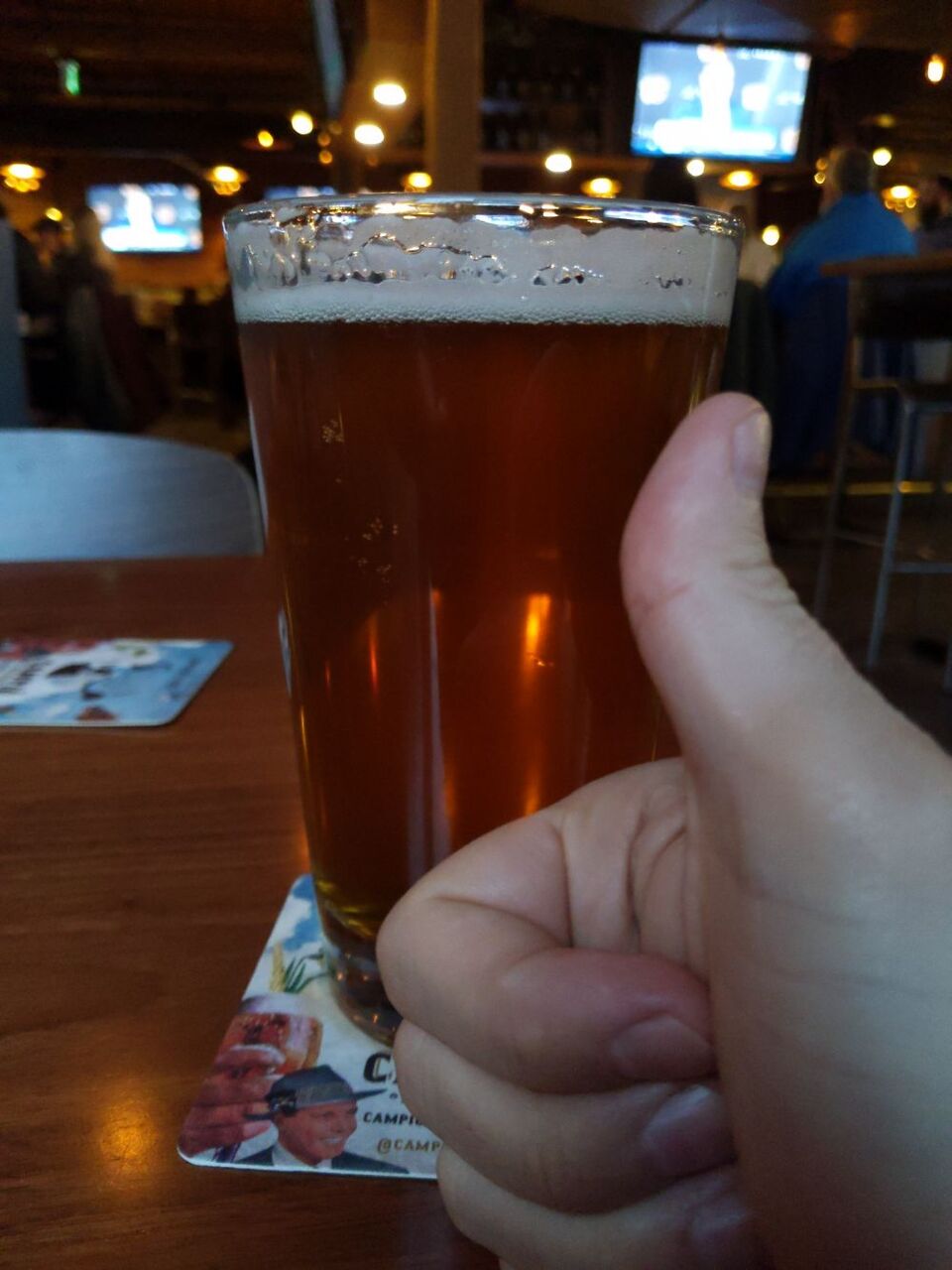Posts from December 2019
- (https://b-ark.ca/YYmiMM)
In 2019 I started to repair my clothes instead of replacing them. Not only is this cheaper and more sustainable, I also get to brush off my sewing skills!
- (https://b-ark.ca/2a0Coo)
#nostalgia is a dangerous drug. I don’t tend to romanticize the past, but as I get older and more and more of my past is memorialized on the web, it’s really easy to fall down the rabbit hole. Rewatching #HaltandCatchFire definitely doesn’t help!
- (https://b-ark.ca/uMwYus)
Currently reading</span> The Way of Kings
<span>(<a href="https://en.wikipedia.org/wiki/The_Stormlight_Archive">The Stormlight Archive</a> #1.0)</span>by
(9780765326355) </span>
- (https://b-ark.ca/KU04wG)
I’ve been rewatching “Halt and Catch Fire”, and what I forget is, in the background, folks like Chuck Peddle, creator of the 6502, were the giants on whose shoulders Jobs and Gates stood. Thank you, Chuck!
Personal Archiving and the IndieWeb
The indieweb is about controlling your identity. But it’s also be a great way to claw back all that content I’ve been scattering across the web so I can get better at archiving!
Our data, scattered
A while back I started to take an interest in the topic of personal data archiving, and in particular how the topic intersects with the various social media platforms that so many of us interact with. The simple fact is that so much of who we are–the things we write, the photos and videos we take, the people we interact with, our very memories, as Facebook likes to remind us–are locked up in a bunch of different walled gardens that are difficult to escape, both technically and due to the powerful social pressures that keep us on these platforms.
I like to think of the traditional photo album as an interesting contrast.
It used to be that we collected memories in these books, and stored those books on a shelf. There was some real downsides to this approach! It’s a pain to add stuff to them (I have to “print” photos??) They’re difficult to share and enjoy. They’re single points of failure (think: house fires). They require intentional acts to ensure preservation. The list goes on.
But, they were ours. We owned them. We could take those photos and easily copy them, share them, rearrange them, archive them, and so forth.
Now imagine that you collected all your photos in a photo album that you could only store and access from a vault being run by a private company. The company would ensure the photos were protected and stored properly, and they provided a really nice, simple mechanism to easily add photos to your album right from your phone! That’s really nice! But if you wanted to look at those photos, you’d have to go to the vault, enter your passcode, and then you could only look at them while you were in the vault. And if you wanted to get a copy of all of those photos for yourself, well, you can, but it’s ugly and complicated and designed to make it minimally possible and maximally difficult.
Next, imagine the corporation changed their policies in a way you didn’t like. Or imagine that corporation went bankrupt. Or experienced a fire. Or you lost the passcode for that vault. Or a loved one passed away and didn’t store the passcode in a safe place.
What then?
Today, we don’t just lock those photos in one vault run by one private company. We lock those photos in many vaults, spread out all over the place. In doing so, we dramatically increase these risks, because instead of just one company failing or one account that we might lose access to or one set of terms of service we need to worry about, it’s many.
All the while we fragment our identity, spreading ourselves thin across the internet, which makes it extremely difficult to preserve all of those memories.
So what can we do about it?
Continue reading...- (https://b-ark.ca/EgkAuu)
I think I’m starting to understand the attraction of retirement, or at least sabbatical. Knowing I can just read or write or listen to music or play guitar and not feel guilty about the other things I’m not doing is just wonderful!
- (https://b-ark.ca/A8W80_)
Finished </span> <a class="p-name" href="https://en.wikipedia.org/wiki/Tiamat%27s_Wrath">Tiamat's Wrath</a> <span>(<a href="https://en.wikipedia.org/wiki/The_Expanse_(novel_series)">The Expanse</a> #8.0)</span>by
(9780356510330) </span>
Five years in Product - Leadership
Continuing my little retrospective writing exercise on my journey in product management, in this part I wanted to talk a bit about my (bumpy) path to better understanding the nature of leadership.
This is part two on a series of posts on my transition to Product Management. If you’d like to see where this series began, feel free to checkout part one.
As I’ve gone back and looked over some of the email traffic from my first couple of years in my role as Product Manager, one of the most obvious things that stands out is just how much was going on at the time (and how little I’ve apparently retained)!
The backdrop of this period was a parallel effort in the company to:
- Modernize our software development practices by moving to a process built on Agile Scrum, and
- Shift way from our custom, consultative software development model to a product-centered approach focused on broader market needs.
Either one of these would be a large, challenging transition. Looking back, attempting to tackle both at the same time was borderline insanity!
Looking more closely at the transition to Product-oriented development, this is also seems to be a pretty common phase in the startup life-cycle.
As I’ve talked to other folks in the industry, I’ve noticed that many startups, particularly those in the B2B space, initially succeed by developing a solution for a couple of “whales” that serve as an essential lifeline that keeps the company operating. Over time, as those successes beget more successes, the company can step back and focus more on the market than individual opportunities, and at that point, a pivot to a Product-centric development process makes a lot of sense.
The trouble is, this is often not an easy transition. Ignoring the challenges in shifting the entire mindset and culture of an organization, there’s the basic politics of handing off responsibility for feature selection and prioritization from technology leadership to product leadership. As you can imagine, this transition can be very difficult if not handled delicately.
Continue reading...- (https://b-ark.ca/UgeG6A)
Currently reading</span> Tiamat’s Wrath
<span>(<a href="https://en.wikipedia.org/wiki/The_Expanse_(novel_series)">The Expanse</a> #8.0)</span>by
(9780356510330) </span>
- (https://b-ark.ca/QO4KM4)
I don’t like the idea of getting a real Christmas tree for the house… messy, maintenance, and you gotta dispose of them. But a tiny one…
- (https://b-ark.ca/s8oQSM)
Great piece on Brave. The Freeloading argument isn’t accurate, but the rest of it is spot on and highlights how Brave is regressive and disempowers content creators.
- (https://b-ark.ca/qmoGIS)
Absolutely fantastic podcast about the rise and fall of Rob Ford. It shows the power of populism and how in many ways Ford presaged Trump.
- (https://b-ark.ca/kiI8uo)
Posts like this make me want to finally learn how to program the FPGA on my shelf! So cool!
- (https://b-ark.ca/CEeUau)
I think I’ve ironed out all the issues and I’m now publishing everything–including notes like this–to my own blog (b-ark.ca), feeding into micro.blog (micro.blog/brettkosinski), auto-syndicating to Twitter!
Five years in Product - The Pivot
It’s been over five years since I moved into software product management and it’s been quite a ride. Given it’s nearly the end of 2019, I thought it would be fun to do a little retrospective! This is part one: the pivot.
Anyone who knows me knows that I basically grew up around computers. I began my lifetime of coding very early on, beginning with a BASIC interpreter and a library book and rapidly progressing to HyperCard, Logo, and then eventually Turbo Pascal. By high school I was one of a few obsessives who spent all their time in the computer lab where, if I wasn’t playing games or messing around with the equipment, I was writing code.
I was, in short, a computer nerd.
And, while my professional life has moved in a different direction, this still true to this day. I honestly doubt there’ll ever be a time when I’m not tinkering away on one project or another. Heck, the relaunch of this blog was as much an excuse to mess around with Jekyll as anything else…
But the idea that I would ever be anything but a “computer guy” never would’ve crossed my mind. I suspect my past self would be rather surprised by where I now find myself!
Continue reading...- (https://b-ark.ca/YsAMKW)
My hand-wired keyboard upgraded with Matt3o Nerd caps. Yes, that’s Elvish!
- (https://b-ark.ca/ucCmGu)
So if this reply appears in the right place, and I think it will, I can confirm that fixing the source URL issue in my webmentions has resolved the problem and I can now successfully post replies to M.b from my blog. Phew! Thanks again!
- (https://b-ark.ca/cYugOi)
Just finished my 1st viewing of my favourite Christmas movie: “National Lampoon’s Christmas Vacation”. Happy 30th anniversary, Griswolds!
- (https://b-ark.ca/Wm4okI)
There’s something different about a nap on the couch next to your loved ones while a screen is on, as opposed to in silence alone in bed. I think it feels festive, somehow. It’s that post-holiday-meal vibe. It’s luxurious and drowsy and it was so pleasant that I think I might try to do it more often.
Ahh, so true! When I was a kid I fondly remember Sunday afternoons when a re-run of Star Trek would be on the TV while my dad napped on the couch. It’s now become one of my favorite things to do on the weekend: an episode of TOS playing as I snooze on the couch while my wife reads beside me.
Markdown all the things!
A post on self-hosted note taking with Markdown and some supporting tools.
I’ll be the first to admit that I’m a frequent user of tools like Google Keep, Google Docs, etc. But I’ve never been terribly comfortable with my dependency on those services. Yeah, obviously there’s the privacy concerns, but more fundamentally, I just want control over my data! It’s a heck of a lot harder to run “grep” over a set of notes in Google Keep…
Thematically, if you’ve been paying attention to this blog, you’ll notice this is part of a theme. Ultimately, I’m doing what I can to make sure I can manage and control my own information outside the walls of the common internet monopolies.
Now, quite a while ago I adopted vimwiki as my note taking method of choice. Before you get scared off, Vim is just a tool to enable a more fundamental idea: that personal information management should be built on the simplest possible tools and file formats, with the data under my own control.
In my case, I chose to focus on taking notes using plain text files, with a basic markup language that would allow me to write richer text and link those notes together.
When I first started doing this a few years ago I chose to stick with Vimwiki’s native markup, as it supported a few things out-of-the-box that Markdown, at the time, didn’t neatly support without using poorly supported extensions (I’m looking at you, checkboxes!) However, right around that same time, Github released a spec for their extensions to Markdown that plugged a lot of the holes that had concerned me, and since then support for these extensions has expanded considerably.
This caused me to revisit the issue and I concluded that a migration to Markdown made a lot of sense.
Continue reading...






